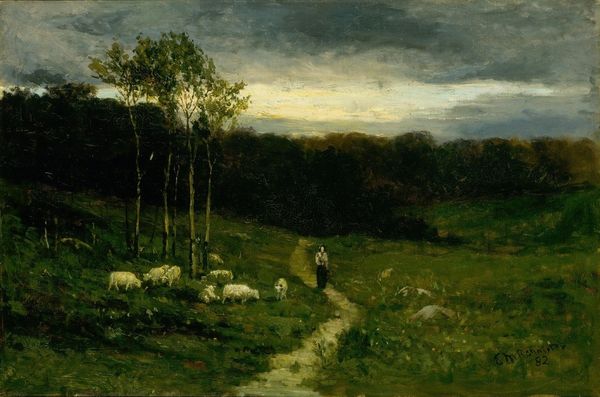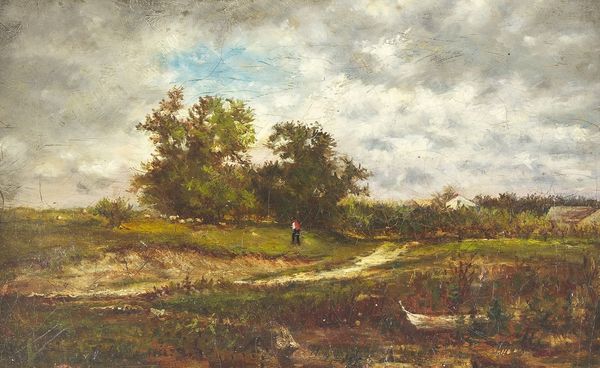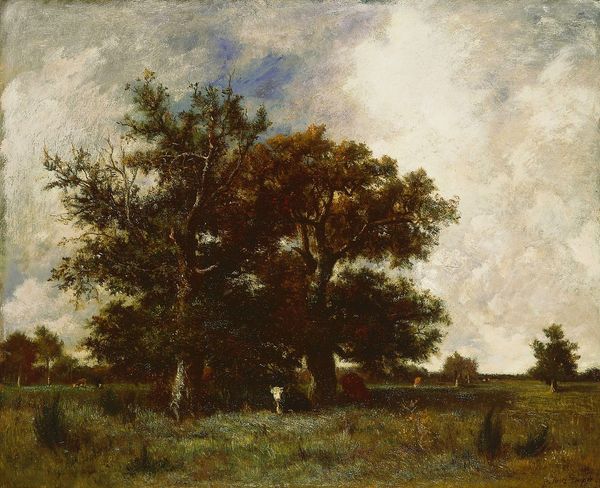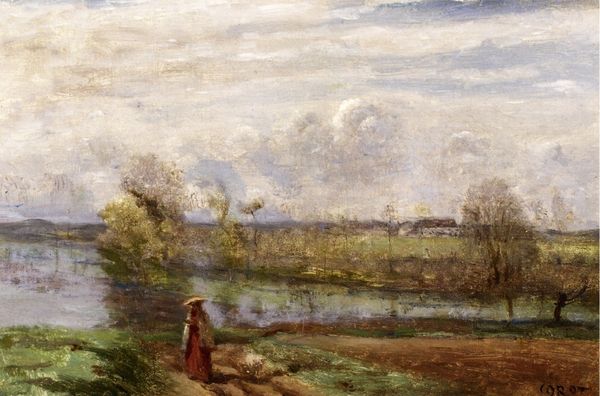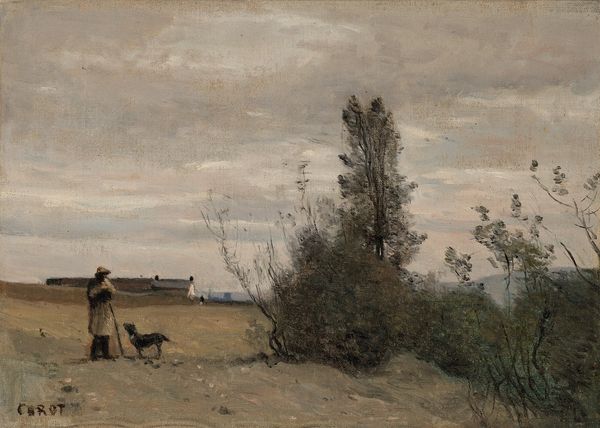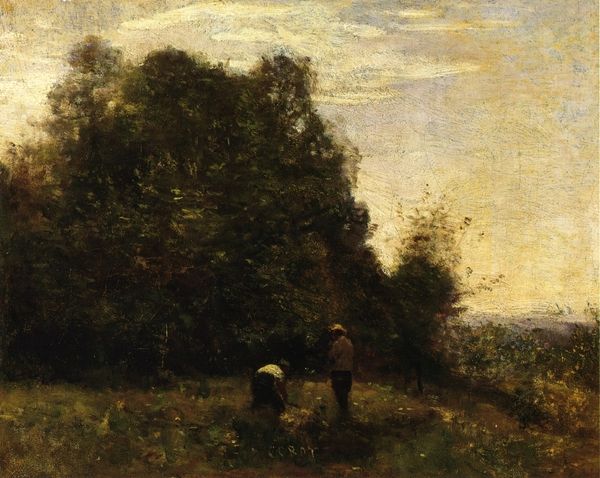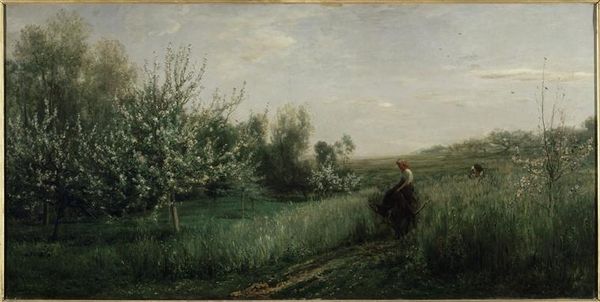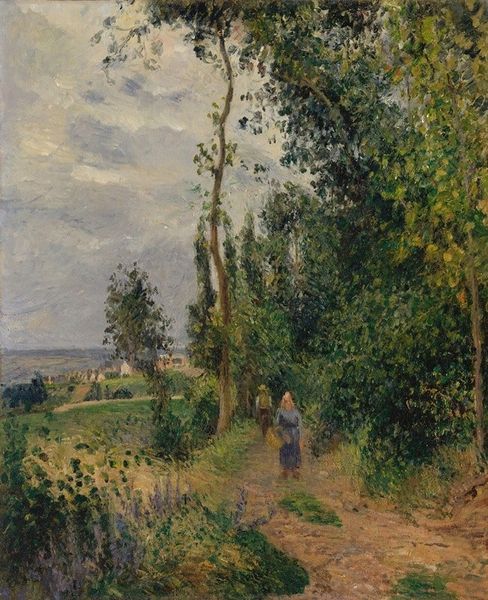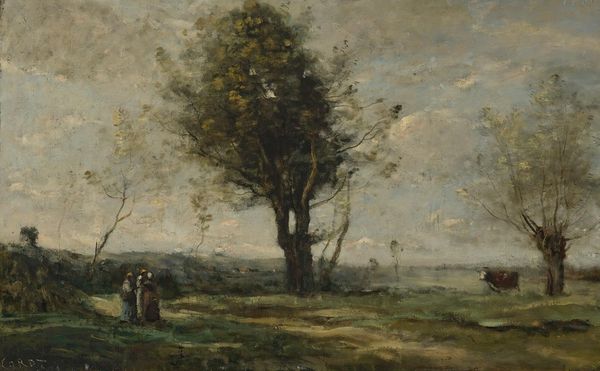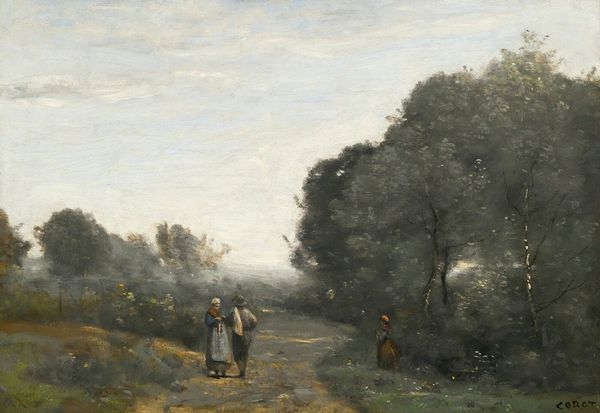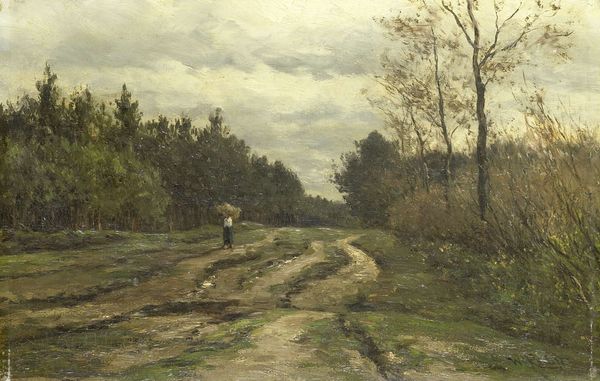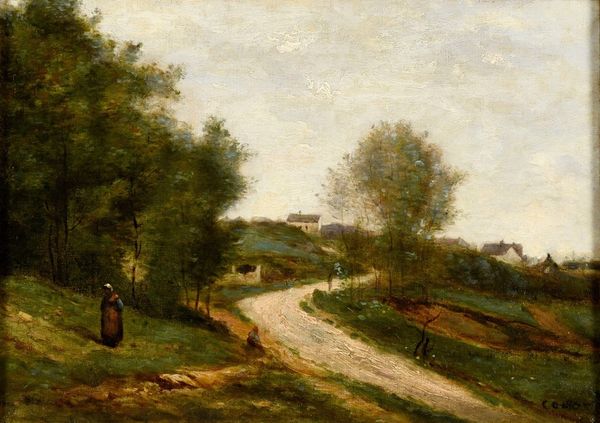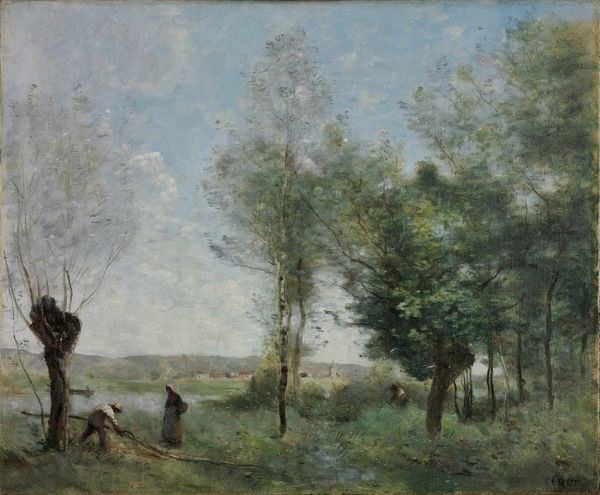
Copyright: Public Domain: Artvee
Curator: "Spring Landscape," an 1862 oil painting by Charles-François Daubigny. What strikes you first? Editor: It feels muted. Even with the suggestion of spring, the color palette is incredibly subdued, dominated by greys and soft greens. The brushwork seems deliberately loose. Curator: Absolutely. Daubigny's commitment to painting en plein air encouraged such directness. Consider the time—France was on the cusp of significant social and political upheaval. Did such art allow room to question oppressive societal forces? Editor: I'm drawn to how the composition itself almost feels like a stage. Note the recession created by the path in the foreground, drawing us in. And observe how that central cluster of trees, practically bare, disrupts the middle ground. Curator: And see the figures there, right? This is where intersectional analysis gets juicy. Who were those people? How did gender or class affect their interactions within that landscape and did art become a tool for exploring complex questions of agency? Editor: Perhaps, but Daubigny clearly manipulated value, using light to guide our vision in particular directions, and that is just good compositional technique. Curator: Of course! That manipulation serves purposes, aesthetic or ideological. Looking closely at this landscape tells stories beyond what is seen: about who holds power. Even those muted greens evoke nature not as idyll but arena. Editor: Perhaps, but in focusing so much on the historical circumstances do we risk losing sight of how masterfully Daubigny balances textures, from the wispy trees to the soft grass? Curator: That very balance echoes class imbalances present throughout French society. Considering what landscape art means in 1862 makes us engage with what's deliberately chosen. Editor: Fair enough. Maybe a successful painting like "Spring Landscape" functions on multiple levels simultaneously: as aesthetic feat and also as loaded artifact within its time. Curator: Precisely. It prompts viewers to examine landscape's inherent power—and that continues reverberating in current debates about representation and justice. Editor: I agree, focusing on the technical skill together with its meaning in art history opens pathways for more perspectives.
Comments
No comments
Be the first to comment and join the conversation on the ultimate creative platform.
